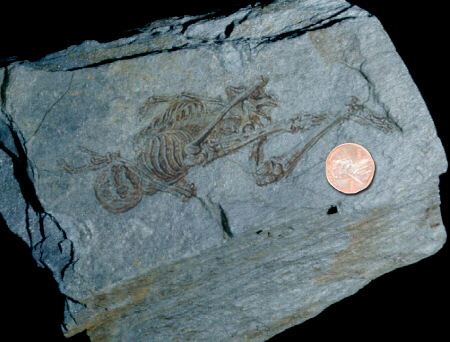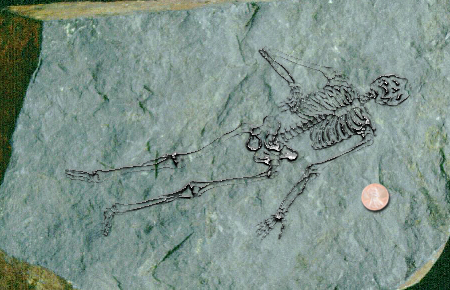In the rocky terrain of the Whitmore mountain range in Antarctica there have been found fossilized skeletal remains of what seems to be extremely small humans.

Interestingly enough, this discovery was made while yours truly was in Antarctica on assignment for The National Reporter to debunk a ridiculous tabloid story about a UFO base in the area.
While investigating this silly story with several colleagues, we happened upon a group of paleontologists who were searching for evidence that dinosaurs had once roamed the Antarctic continent before it tore loose from Africa and South America and drifted southward to its present location.

What they found instead astonished them, not only because of what it was but because of its age.
“We tested the fossils and have determined without a shadow of a doubt that they are at least 600 million years old.” Doctor Marly of Cambridge University told us.
“600 million years ago, jellyfish first appeared. There were no human beings in the world and there wouldn’t be any for nearly five hundred and 60 million years. There weren’t even any dinosaurs around at that time.”
“The first skeleton we found was hidden within the layers of a large piece of sedimentary rock that we had broken loose from the mountainside.We knew that it would most likely contain some fossils because of its type and age.” Dr.Marly explained.
“When we split the rock apart we were completely confused. Here was this fossil from an age when the appearance of the first vertebrates was still millions of years off and it was a complete skeleton. And not only that, it appeared to be human.”

“The second skeleton was a very good specimen, Unlike the first one, the second skeleton was in a fully extended position with excellent detail.” Dr. Marly told us.
“It is quite obvious from our study of these skeletons that they are definitely human and not a species of primate. Who they were and how large their population was and if they were technologically advanced is a complete mystery.”

The fossils have been flown to the National Institute of ancient studies in Washington DC for further analysis.
The National Reporter will be doing a follow-up report on this amazing discovery within the next few months.
The National Reporter would also like to stress to our readers that these tiny fossilized humanoid skeletons are not the remains of extraterrestrial aliens as we expect the tabloids will be reporting it when the news breaks.
If you encounter any stories of these fossils that claim they are extra-terrestrial in origin, please ignore them.





